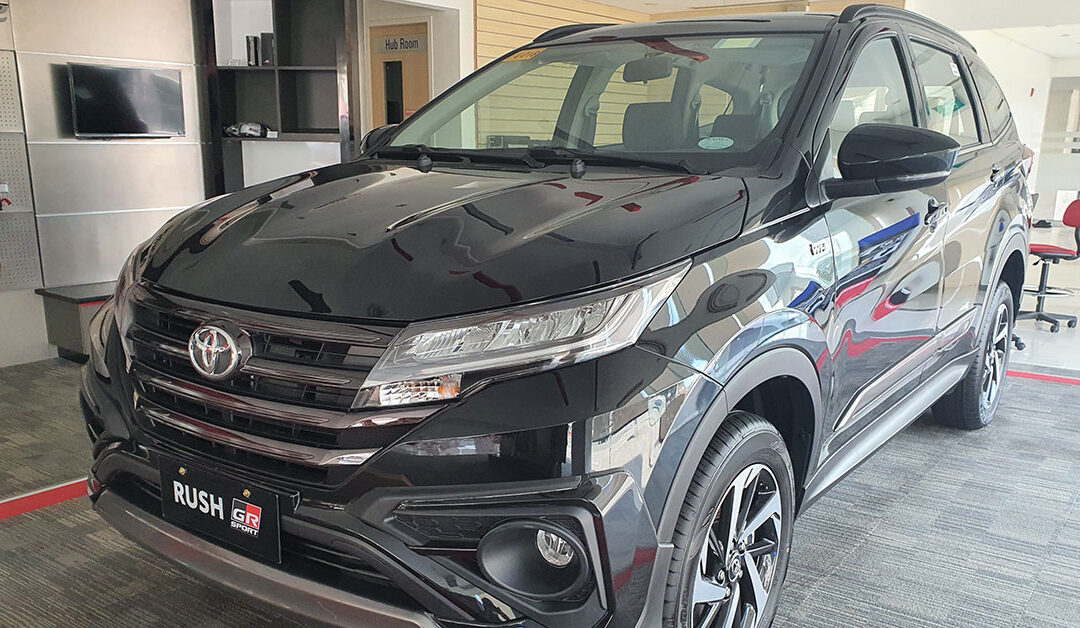We’re typically a two-car household but during the pandemic, we decided to downsize our car fleet. We didn’t really had anywhere to go and letting two cars gather dust in the garage wasn’t a good situation. So, we decided to get rid of one.
Fast-forward to today, activities are back in full swing and face-to-face. We now need the mobility of a second car that we’re in the market for one currently. The timing is a bit okay financially since we just finished paying off the car loan of our current car, meaning there’s space in the budget for it.
We’ve actually gone around checking what’s available but it seems that whatever make and model we check, the prices are just outrageous compared to the last time we went car shopping.
What Is the Price of a Brand New Car in 2023?
Here are the price ranges of the different cars across segments:
| Segment | Models | Price Range |
| Subcompact Hatchback | Toyota Wigo, Honda Brio, Mitsubishi Mirage | P570,000 to P720,000 |
| Compact Sedan | Toyota Vios, Honda City, Nissan Almera | P700,000 to P1,010,000 |
| 7-Seater Crossover Utility Vehicle (CUV) | Toyota Veloz, Honda BR-V, Mitsubishi Xpander | P1,200,000 to P1,400,000 |
| Mid-size Sport Utility Vehicle (SUV) | Toyota Fortuner, Mitsubishi Montero, Isuzu MUX | P1,700,000 to P2,500,000 |
| Pickup Truck | Toyota Hilux, Ford Ranger, Nissan Strada | P1,200,000 to P2,000,000 |
As you can see, the cheapest brand new car in the Philippines (like a manual Toyota Wigo) can set you back more than half a million pesos already when paid in cash. And these models also happen to be the smallest and most basic of models. Almost nothing in them cannot be found in a 30-year old model that you can now buy at 10 percent of the brand new car’s price.
The price range can also be quite wide, especially for the SUV and truck segments. Some variants are equipped with 4×4 or four-wheel drive (4WD) systems that make them cost more than P2 million, making you wonder if a 4WD system does really cost a cool million.

Why is a Brand New Car Expensive?
If you’re wondering why brand new car prices are quite high, the prices can be attributed to the following:
Inflation
Given the state of the economy, high inflation has become inevitable. Cars are like onions these day. Ridiculously expensive.
Excise Tax
(No) thanks to the TRAIN Law, cars have gotten more expensive due to the higher excise tax imposed on imported vehicles. Unfortunately, many of the models offered by car manufacturers here in the Philippines have to be imported.
Low Supply, High Demand
The good old law of supply and demand. Automakers are still reeling from the manufacturing and materials crunch caused by the pandemic. Their output doesn’t quite outpace the demand for cars globally just yet. Even locally, a lot of people are actually buying brand new cars. New car sales are up by 42 percent in January 2023 compared to January 2022.
Global Chip Shortage
Modern cars rely on a bunch of computer chips to control their various systems. With low supply of computer chips, plants can only build so many of these new models. Backlog from manufacturers mean fewer available units.
Technology
Modern cars are supposed to be equipped with the most modern technologies, allowing automakers to up their prices by claiming that new cars are “better.” Models with radar and sensor-enabled sensing and safety features (like auto emergency braking) often command at least a P150,000 premium over variants that don’t have them. Whether these cars are actually “better” are subject to debate. I’m of the persuasion that not all car technology is worth the price.
Dealership Deal-making
Keep in mind that the price ranges mentioned above are just standard retail price (SRP). Cars do cost more when financed. Too bad, dealerships. Rumors are abound that dealerships are making units primarily available only to those availing of in-house financing since they’re supposed to be getting more money from the higher rates charged to customers.
Scalpers
Believe it or not, this is happening. I’ve already chanced upon postings of used car agents trying to sell “brand new” units on Facebook. But looking at the mileage, it’s obvious that they’re basically scalped units since they already have a couple of hundred kilometers on their odometers. These units are high in demand, bought privately, and are being resold at a premium. This simply goes against the principle that common cars depreciate once you drive them off from the dealership.

What Are the Advantages of Buying a Brand New Car?
A brand new car sure has advantages, which include:
Improved Performance and Driving Experience
If you’re wondering what features are in a brand new car in 2023, well you can expect a lot of good coming from modern engineering. To start, engines are also designed to produce more power. A modern 1.5L engine can easily produce 120 horsepower naturally-aspirated and even more with a turbo. I remember the 1.6L in my old Corolla from 30 years ago only produced less than 100 hp.
There are plenty of technologies too. Remote start/stop means you can fire up the engine even before you step inside the vehicle. Seats are also often motorized for easy adjustments and better ergonomics. To fit our more digital lifestyles, infotainment systems can be connected to mobile phones through Apple CarPlay and Android Auto.
Improved Safety
New cars are also generally safer. Stop judging a vehicle’s toughness by they look after a crash. Some people still believe that older cars are “tougher” since they don’t dent or crumple as much as new cars in collisions. Modern cars are designed to crumple to deflect energy away from the people inside them during crashes, resulting in fewer and less grave injuries.
Aside from safety features in the construction, many brand new cars now also feature driver-assist functionalities like auto emergency braking that stops the car when it anticipates a collision, 360 camera that allows drivers to see view blind spots, lane departure warning, hill climb and descent assist to make driving on hills and mountain roads easy, and automated parking assist.
Better Fuel Economy
While there are a few models that are outliers (like the Ford Territory), new cars are also designed to consume less fuel. Some models like the Toyota Corolla Cross, the Suzuki Ertiga, and the Geely Azkarra even feature hybrid powertrains, which allow you to squeeze out more from your conventional fuel. The Nissan Kicks, for example, is actually an electric vehicle (EV) that has a gasoline-powered generator.
Warranty
Brand new cars do offer some peace of mind due to their warranty. Should anything break, like the engine, transmission, or suspensions, the dealership should be able to repair or replace them.
Most of the popular Japanese makes come with 3-year or 100,000 km warranties. Others, like the American brands (Chevrolet), the Koreans (Kia and Hyundai), and the Chinese have been offering 5-year warranties or 100,000 km as standard. Some of the Chinese automakers like Geely even push the kilometer count to 150,000 km.

What Are the Disadvantages of Buying a Brand New Car?
There are downsides to getting a brand new car as well. A few crucial ones are:
High Price
What makes brand new cars primarily unattractive to buy these days are the high prices. Just over the past month, various automakers have jacked upped the prices of many of their models by P20 to 40 thousand. The base variant 2023 Honda HR-V S even got a ridiculous P139,000 price increase from the 2022 model year. Yet, you’re basically getting the same car.
Poor Reliability
The over-reliance on electronic and computing components have made cars less reliable compared to cars that have mainly mechanical components. For example, cars used to have manual knobs and levers to operate things like the air-conditioning or the parking brake. Many of today’s cars have controls push-button controls. A/C controls are integrated with the infotainment system. Old switches and knobs can last millions of actuations. Electronic interfaces can be foiled simply by a spilled drink.
Expensive Repairs
Something about the modern engineering and designs are also making new cars harder and more expensive to maintain and repair. Some components are designed to be swapped out as entire sets instead of being. Engine bay layouts are now cramped and complicated, making even routine tasks to require lengthy assembly and disassembly to do.
Is It Worth It?
The question of whether or not a brand new car is worth it today can boil down to bang per buck. Are you actually getting much more car for the price you’re paying? I don’t think so.
You can very well get a decent well-maintained car in the pre-owned or used car market for just half of the price of a brand new one. And you’d probably just be missing out on a few bells and whistles like the automated and sensing features, but you’d still get a good performing vehicle that will get you from Point A to Point B.
Then again, there’s also question of needs and wants. If you truly want a brand new car, then sure, buy one.
In our case, opting for a brand new car is more for peace of mind. The warranty does give you a sense of security that you wouldn’t worry about exorbitant repair costs for three years minimum.
Also, fortunately for us, the purchase is also going into a corporate car plan, so part of the expense is going to be subsidized. Since it basically makes the cost issue a bit moot, we’re just focusing on enjoying the advantages that a new car brings. Oh, and there’s the brand new car smell to enjoy too.

